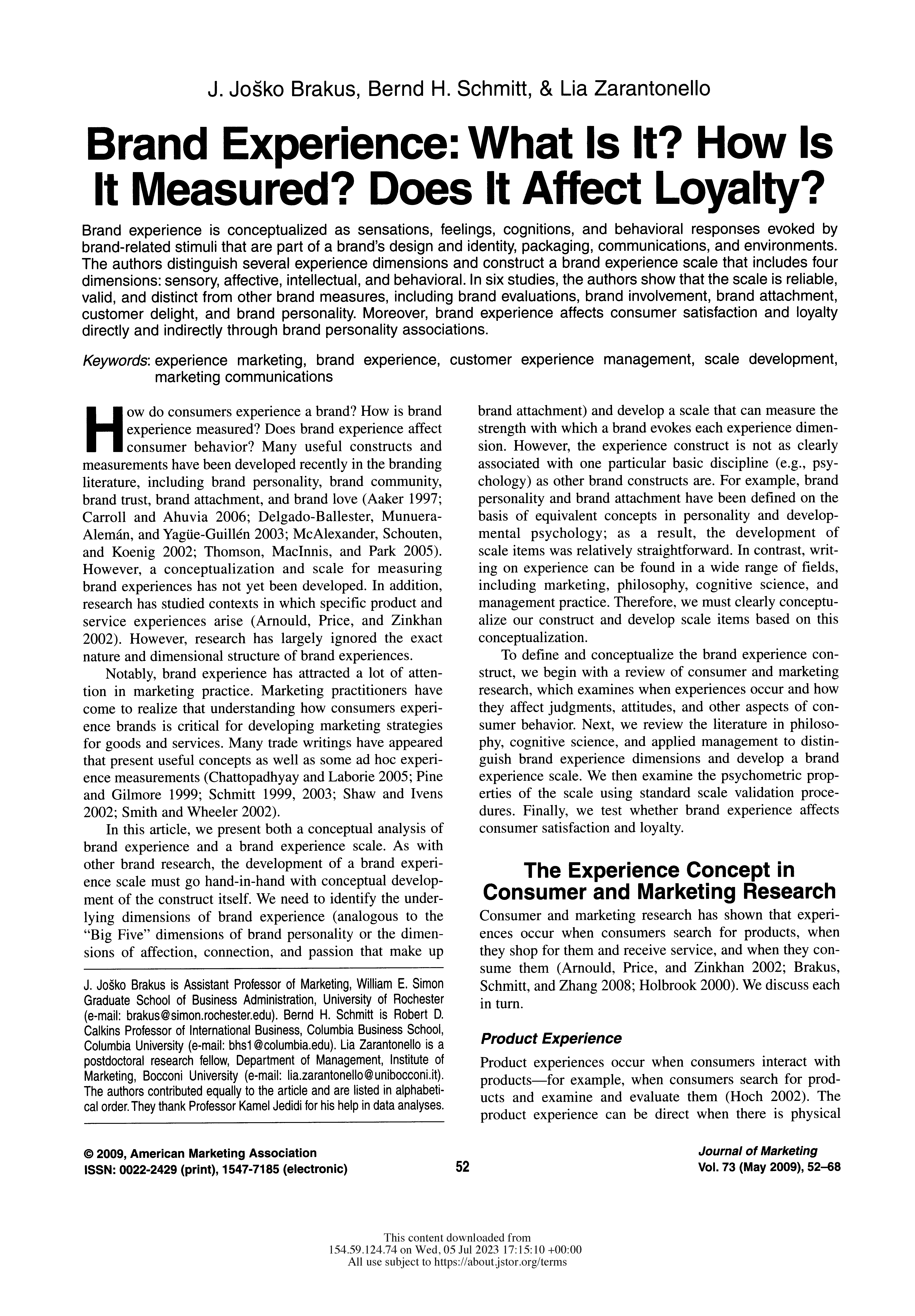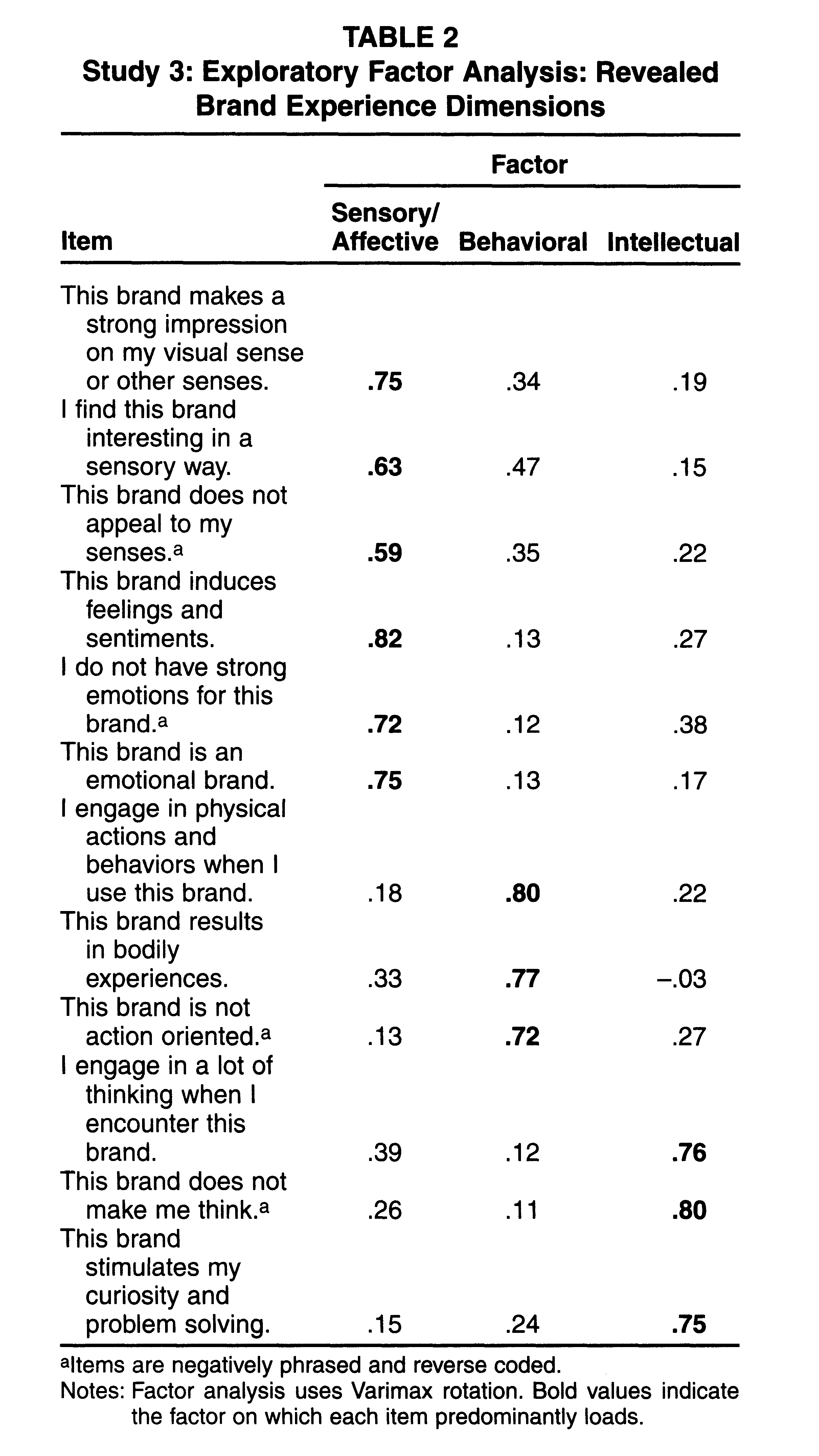| variable | N | Median | Mean | SD | Min | Max |
|---|---|---|---|---|---|---|
| ad_free | 515 | 4 | 3.61 | 1.85 | 1 | 7 |
| exclusives | 515 | 6 | 5.67 | 1.19 | 2 | 7 |
| flexibility | 515 | 4 | 3.97 | 1.49 | 1 | 7 |
| freshness | 515 | 5 | 5.36 | 1.15 | 2 | 7 |
| interface | 515 | 4 | 3.52 | 1.21 | 1 | 7 |
| load_time | 515 | 4 | 4.11 | 1.31 | 1 | 7 |
| price | 515 | 5 | 4.57 | 1.35 | 1 | 7 |
| production | 515 | 5 | 4.69 | 1.28 | 1 | 7 |
| reliability | 515 | 5 | 4.82 | 1.13 | 2 | 7 |
| selection | 515 | 5 | 4.79 | 1.35 | 1 | 7 |
| stream_quality | 515 | 5 | 4.53 | 1.20 | 1 | 7 |
Latent Variables and Factors
Lecture
Measuring and analyzing latent variables in survey datasets.
Larry Vincent,
Professor of the Practice
Marketing
MKT 512
October 16, 2025

What is a Latent Variable?
- Not directly observable or measurable
- Exists as a construct combining multiple observable factors
- Examples:
- Customer satisfaction
- Brand loyalty
- Purchase intention
- Product quality perception
Example
How satisifed are you with our service?
When is this sufficient?
- Quick customer pulse checks
- Transaction-specific feedback
- Trend monitoring over time
When do we need more?
- Understanding drivers of satisfaction
- Predicting future behavior
- Developing improvement strategies
- Academic research requiring construct validity
Real-World Example: Customer Satisfaction
What are we really measuring?
- Service quality?
- Product performance?
- Value perception?
- Staff interaction?
- Problem resolution?
- Expectations vs. reality?
- All of the above?
One question cannot usually capture this level of complexity.
Your turn
![]()
AI Prompt:
“Generate a set of 8-10 survey items to measure a consumer’s perception of a product’s relevance to
their life.”
Which items seem to measure different things? Can you name the possible dimensions they imply?
Are these items all measuring the same kind of relevance (e.g., personal, functional, social)?
Could two people read these items and interpret them differently based on their own experiences?
Multi-item scales
A multi-item scale is a measurement instrument that combines multiple related questions or items to assess a complex, underlying construct (latent variable) that cannot be directly observed or measured with a single question.
Key Features
- Multiple related items measuring different aspects of the same construct
- Increases reliability and validity compared to single-item measures
- Reduces measurement error through item aggregation
Example
Customer satisfaction scale having multiple items to measure three distinct dimensions of satisfaction…
- Contentment
- Likelihood to recommend
- Value for the money
When do we need scales?
Complex psychological constructs
(i.e, brand perception, purchase motivation, etc.)Behavioral intentions
(i.e., likelihood to recommend, future purchase behavior, etc.)Attitude measurement
(i.e., product preferences, service quality evaluation, etc.)
Benefits of well-designed scales
- Increased reliability
- Better construct validity
- Reduced measurement error
- Capture multiple dimensions
- Enable factor analysis
- Allow for internal consistency checks
Good example

Good design principles
- Clear theoretical dimensions
- Items that tap into the same construct but from different angles
- Consistent level of abstraction
- Items clearly relate to what we’re trying to measure
- Items show good likelihood of internal consistency
- Clear, simple language
Challenging example
A scale to measure environmental consciousness
- I always recycle my plastic bottles
- I think climate change is a serious issue
- I enjoy spending time outdoors
- I donate to environmental charities
- I prefer natural scenery to city views
From scales to factors…
A galaxy is like a factor in the universe.
Factor analysis
- Identify clusters of inter-correlated variables
- Family of multivariate statistical techniques for exploring correlations between variables
- Empirical approach to test theoretical data structures
- Widely used method in psychometric instrument development
Purposes
- Data reduction
Reduce number of variables in dataset to smaller set of factors - Theory development
Detect structural relationships between variables, often latent structures that describe a governing force
Theory development
- Investigate underlying correlation patterns shared by variables in order to test a theoretical model (i.e. How many personality factors are there?)
- Done well, always addresses a theoretical question
(rather than just calculating an arbirtrary factor score)
Factors in the wild


Approcahes to factor analysis
- Principal Components Analysis (PCA)
A data reduction technique that summarizes variance in observed variables without assuming underlying latent constructs. Often used as a first step to explore structure and simplify data - Exploratory Factor Analysis (EFA)
Explore and summarize underlying correlational structure for a dataset - Confirmatory Factor Analysis (CFA)
Tests that a correlational structure, as hypothesized, exists in a dataset and measures “goodness of fit.”
Methods of data reduction
Principal Components Analysis (PCA)
- For data reduction
- Creates summary scores
- Best for: Simplifying data, creating composite scores, reducing variables
Exploratory Factor Analysis (EFA)
- For understanding underlying structures
- Looks at shared patterns between variables
- Best for: Theory development, scale development, understanding latent constructs
Differences

Assumptions
- Garbage in; Garbage Out
- Sample size matters
(Min = >5 cases per variable; Ideal = >20 cases per variable) - Interval or ratio data suitable for correlation analysis
- Normality: normal distribution is ideal but not required
- Outliers: Factor analysis is sensitive to outliers, which should be removed or transformed
- Requires strong evidence of correlation
(correlation matrix coefficients > 0.3)
Process
- Test assumptions
- Select type of factor analysis
- Determine number of factors
- Select items
- Name and define factors
- Examine correlations among factors
- Analyze internal reliability
- Compute composite scores
Customer experience dataset
Correlations

PCA

PCA in R
# Generate PCA data for the value attributes
atts_pca <- prcomp(atts, scale. = TRUE)
# Extract the component variables from the rotation matrix
atts_pca_tidy <- tidy(atts_pca, matrix = "rotation")
# Add the component data back to our original datafram for easy analysis
atts_pca_augment <- augment(atts_pca, atts)PCA in R
# Generate PCA data for the value attributes
atts_pca <- prcomp(atts, scale. = TRUE)
# Extract the component variables from the rotation matrix
atts_pca_tidy <- tidy(atts_pca, matrix = "rotation")
# Add the component data back to our original datafram for easy analysis
atts_pca_augment <- augment(atts_pca, atts)Rows: 515
Columns: 25
$ .rownames <chr> "1", "2", "3", "4", "5", "6", "7", "8", "9", "10", "11"…
$ selection <dbl> 5, 2, 4, 5, 4, 5, 4, 4, 4, 5, 5, 4, 5, 4, 4, 1, 3, 4, 4…
$ freshness <dbl> 6, 4, 6, 6, 6, 6, 6, 5, 5, 6, 5, 5, 4, 6, 4, 2, 4, 5, 4…
$ exclusives <dbl> 5, 5, 6, 6, 5, 7, 6, 7, 5, 6, 5, 5, 4, 5, 5, 2, 5, 5, 5…
$ production <dbl> 6, 3, 3, 5, 4, 6, 5, 4, 4, 4, 2, 5, 4, 3, 4, 2, 4, 5, 5…
$ stream_quality <dbl> 5, 4, 3, 4, 3, 4, 5, 2, 3, 4, 2, 4, 3, 5, 3, 2, 4, 5, 5…
$ interface <dbl> 4, 4, 3, 4, 2, 2, 3, 1, 1, 2, 1, 3, 3, 3, 2, 2, 3, 2, 2…
$ load_time <dbl> 5, 4, 5, 6, 3, 3, 4, 1, 3, 3, 1, 4, 3, 3, 3, 3, 3, 4, 2…
$ reliability <dbl> 6, 6, 5, 6, 5, 5, 5, 3, 4, 4, 2, 6, 4, 6, 4, 4, 5, 5, 6…
$ price <dbl> 4, 6, 5, 4, 6, 4, 5, 5, 3, 4, 5, 5, 4, 6, 6, 4, 5, 5, 6…
$ ad_free <dbl> 5, 6, 6, 5, 5, 5, 5, 5, 4, 5, 5, 5, 6, 6, 6, 4, 4, 4, 6…
$ flexibility <dbl> 5, 7, 4, 5, 5, 5, 4, 5, 3, 5, 4, 5, 5, 6, 6, 4, 5, 4, 7…
$ value <dbl> 5, 6, 5, 4, 4, 4, 5, 4, 4, 4, 4, 6, 5, 6, 6, 5, 5, 5, 6…
$ .fittedPC1 <dbl> -0.53921514, 2.83830534, 1.33551467, -0.38353822, 2.044…
$ .fittedPC2 <dbl> 0.97501116, 2.32547409, 0.63580098, 0.90671898, -0.2233…
$ .fittedPC3 <dbl> 0.198419179, 0.470935617, -0.223009414, 0.443588586, -0…
$ .fittedPC4 <dbl> 1.477343080, 0.708228129, -0.009214820, 1.098398190, 0.…
$ .fittedPC5 <dbl> -0.19965779, 0.61477373, -1.37297554, -1.42332925, -0.9…
$ .fittedPC6 <dbl> 0.31741410, -0.39843332, -1.13439459, -0.69495416, -0.0…
$ .fittedPC7 <dbl> -0.74490236, -0.31955883, 0.37527012, -0.73274202, 0.31…
$ .fittedPC8 <dbl> 0.49070944, -1.03674717, 0.28228210, 0.54056220, -0.237…
$ .fittedPC9 <dbl> 0.036735455, 0.313480138, 0.569294404, -0.004378656, -0…
$ .fittedPC10 <dbl> -0.43539543, 0.81600722, 0.25165611, 0.08061553, -0.176…
$ .fittedPC11 <dbl> -0.26016875, 0.02679340, 0.58930499, -0.34439566, 0.800…
$ .fittedPC12 <dbl> -0.3488676821, 0.2388837178, -0.3910916532, 0.085246070…PCA output

EFA
How many factors?

A good factor solution is one that explains the most variance with the fewest factors.
EFA statistics
| n.factors | total.variance | statistic | p.value | df |
|---|---|---|---|---|
| 1 | 0.258 | 2,770.311 | 0.000 | 54 |
| 2 | 0.529 | 1,291.999 | 0.000 | 43 |
| 3 | 0.662 | 507.220 | 0.000 | 33 |
| 4 | 0.733 | 154.632 | 0.000 | 24 |
| 5 | 0.762 | 29.974 | 0.018 | 16 |
Eigen values
- Each factor has an Eigen Value (EV) that indicates amount of variance it accounts for
- EV for each successive factor has a lower value
- Rule of thumb: EVs over 1 are “stable”
EVs on PCA

Factor loadings

EFA diagram

Uniqueness
| variable | uniqueness |
|---|---|
| freshness | 0.656 |
| production | 0.446 |
| value | 0.395 |
| flexibility | 0.380 |
| stream_quality | 0.351 |
| interface | 0.330 |
| load_time | 0.303 |
| reliability | 0.295 |
| exclusives | 0.267 |
| price | 0.245 |
| selection | 0.212 |
| ad_free | 0.170 |
Rotation

Rotated factors

EFA diagram

Naming the factors
| Factor | Variables |
|---|---|
| Content Quality | Selection |
| Freshness | |
| Exclusives | |
| Production Value | |
| Technical Performance | Stream Quality |
| Interface Ease | |
| Load Time | |
| Reliability | |
| Value Perception | Price Fairness |
| Ad Frequency | |
| Subscription Flexibility | |
| Overall Value |
Check correlations

Determine reliability
- Chronbach’s alpha is measure of internal reliability
- Estimates how closely related a set of items are as a group
- Alpha is assessed on a scale from 0-1
Alpha scores
| Raw Alpha | ||
| factor | raw_alpha | std.alpha |
|---|---|---|
| Content | 0.85 | 0.85 |
| Technical | 0.84 | 0.84 |
| Value | 0.85 | 0.86 |
| Alpha Drops | ||
| variable | raw_alpha | std.alpha |
|---|---|---|
| Content | ||
| selection | 0.79 | 0.79 |
| freshness | 0.85 | 0.86 |
| exclusives | 0.80 | 0.80 |
| production | 0.80 | 0.79 |
| Technical | ||
| stream_quality | 0.80 | 0.81 |
| interface | 0.80 | 0.80 |
| load_time | 0.79 | 0.79 |
| reliability | 0.81 | 0.81 |
| Value | ||
| price | 0.78 | 0.77 |
| ad_free | 0.79 | 0.80 |
| flexibility | 0.80 | 0.82 |
| value | 0.86 | 0.87 |
Composite scores

ANOVA
| factor | contrast | estimate | conf.low | conf.high | adj.p.value |
|---|---|---|---|---|---|
| Content | Free-Basic | −1.3 | −1.5 | −1.1 | 0.00 |
| Content | Premium-Basic | 0.1 | −0.1 | 0.4 | 0.45 |
| Content | Premium-Free | 1.4 | 1.2 | 1.6 | 0.00 |
| Technical | Free-Basic | −0.8 | −1.1 | −0.6 | 0.00 |
| Technical | Premium-Basic | −0.9 | −1.2 | −0.6 | 0.00 |
| Technical | Premium-Free | −0.1 | −0.3 | 0.2 | 0.82 |
| Value | Free-Basic | 0.7 | 0.5 | 1.0 | 0.00 |
| Value | Premium-Basic | −1.5 | −1.8 | −1.2 | 0.00 |
| Value | Premium-Free | −2.2 | −2.5 | −2.0 | 0.00 |
